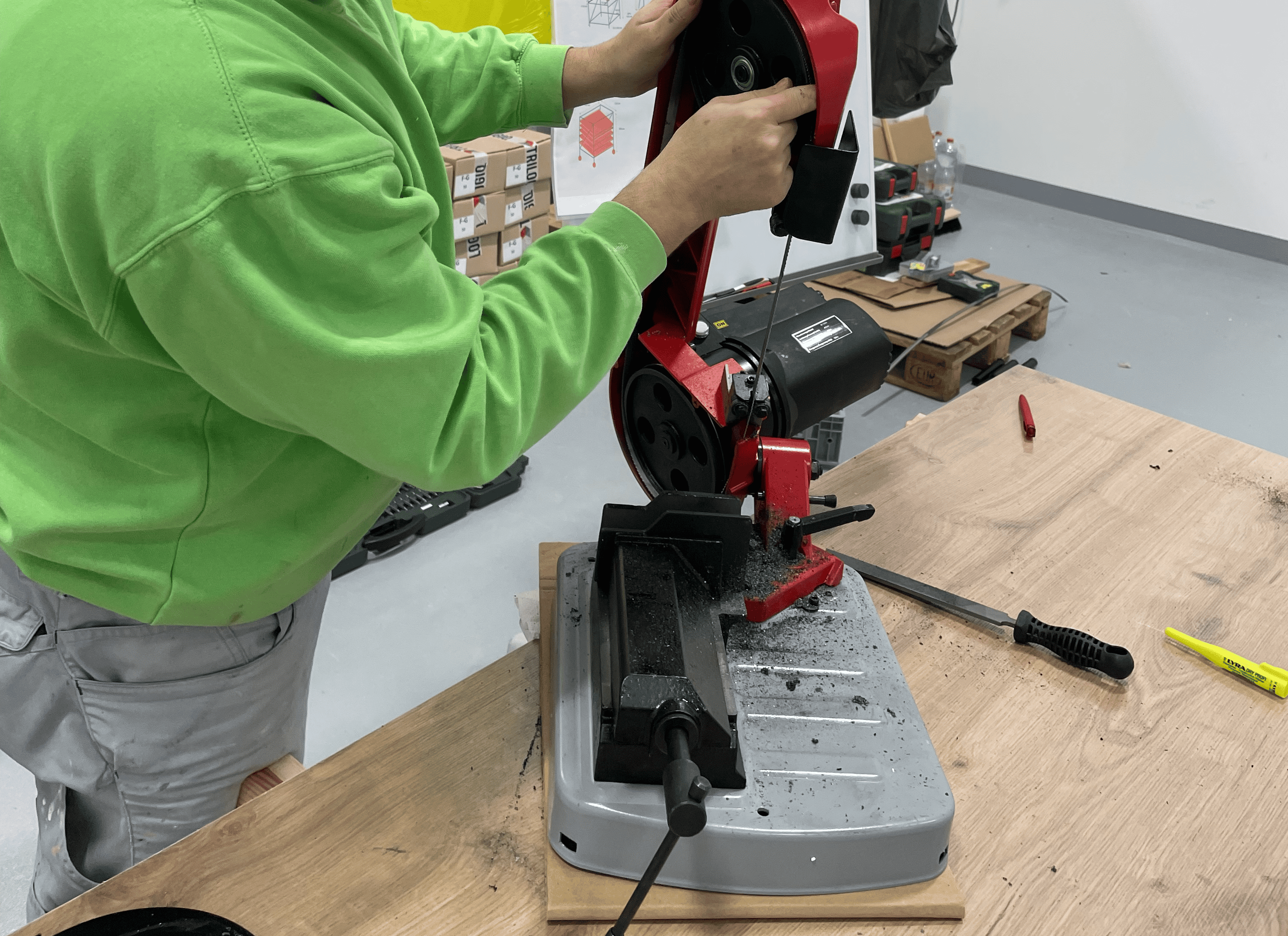
Die Bedeutung der SMED Methode
Was ist die SMED Methode?
Die SMED Methode, entwickelt von Shigeo Shingo, ist eine Technik zur schnellen Umrüstung von Maschinen und Anlagen. Ziel ist es, die Rüstzeiten auf unter zehn Minuten zu reduzieren, um die Maschinenstillstandszeiten zu minimieren und die Produktivität zu erhöhen. Dies wird durch die Trennung von internen und externen Rüstvorgängen sowie durch die Standardisierung und Optimierung der Abläufe erreicht.
Die Kernelemente der SMED Methode
Die SMED Methode umfasst mehrere wesentliche Schritte, die darauf abzielen, die Rüstzeiten signifikant zu verkürzen:
- Analyse des aktuellen Rüstprozesses: Detaillierte Untersuchung der bestehenden Rüstvorgänge, um Schwachstellen und Optimierungspotenziale zu identifizieren.
- Trennung von internen und externen Rüstvorgängen: Interne Rüstvorgänge sind Tätigkeiten, die nur bei gestoppter Maschine durchgeführt werden können, während externe Rüstvorgänge auch während des laufenden Betriebs erfolgen können.
- Umwandlung interner in externe Rüstvorgänge: Verschiebung möglichst vieler Tätigkeiten in den externen Bereich, um die Maschinenstillstandszeiten zu minimieren.
- Standardisierung und Optimierung: Standardisierung der Rüstvorgänge und Implementierung von Optimierungsmaßnahmen, um die Effizienz weiter zu steigern.
- Kontinuierliche Verbesserung: Regelmäßige Überprüfung und Anpassung der Rüstprozesse, um kontinuierliche Verbesserungen sicherzustellen.
Implementierung der SMED Methode
Die erfolgreiche Implementierung der SMED Methode erfordert eine systematische Vorgehensweise und das Engagement der gesamten Organisation. Hier sind einige Schritte, die bei der Einführung von SMED hilfreich sein können:
- Schulung und Sensibilisierung: Schulung der Mitarbeiter in den Prinzipien und Techniken der SMED Methode und Sensibilisierung für die Bedeutung kurzer Rüstzeiten.
- Teamzusammenstellung: Bildung eines interdisziplinären Teams, das die Rüstvorgänge analysiert und Optimierungsvorschläge entwickelt.
- Analyse und Dokumentation: Detaillierte Analyse und Dokumentation der aktuellen Rüstvorgänge, um eine solide Ausgangsbasis für die Optimierung zu schaffen.
- Umsetzung und Überwachung: Umsetzung der Optimierungsmaßnahmen und kontinuierliche Überwachung der Ergebnisse, um sicherzustellen, dass die Verbesserungen nachhaltig sind.
- Kontinuierliche Verbesserung: Etablierung eines Prozesses für regelmäßige Überprüfungen und Anpassungen der Rüstprozesse zur Förderung einer Kultur der kontinuierlichen Verbesserung.
Fazit
Die SMED Methode ist ein kraftvolles Werkzeug zur Reduzierung der Rüstzeiten und zur Steigerung der Effizienz in der Produktion. Durch die systematische Analyse, Standardisierung und Optimierung der Rüstvorgänge können Unternehmen ihre Maschinenverfügbarkeit erhöhen, die Produktionskosten senken und die Flexibilität verbessern. Die erfolgreiche Implementierung der SMED Methode erfordert Engagement, Schulung und eine systematische Vorgehensweise, bietet jedoch signifikante Vorteile für Unternehmen jeder Größe und Branche.
Ihr Nutzen
Welche Vorteile Ihnen Projektmanagement Kenntnisse bringen?
1
Reduzierte Rüstzeiten
Durch die systematische Anwendung der SMED Methode können die Rüstzeiten signifikant verkürzt werden, was zu einer höheren Maschinenverfügbarkeit und Produktivität führt.
2
Erhöhte Flexibilität
Die Reduzierung der Rüstzeiten ermöglicht eine schnellere Umstellung auf neue Produkte und Losgrößen, was die Flexibilität der Produktion erhöht und eine schnellere Reaktion auf Marktanforderungen ermöglicht.
3
Kosteneinsparungen
Durch die Verkürzung der Rüstzeiten und die erhöhte Maschinenverfügbarkeit können die Produktionskosten gesenkt und die Rentabilität gesteigert werden.
4
Verbesserte Qualität
Die Standardisierung und Optimierung der Rüstvorgänge tragen zur Verbesserung der Produktqualität bei, indem Fehlerquellen minimiert und die Prozessstabilität erhöht werden.
5
Erhöhte Mitarbeiterzufriedenheit
Die Einbindung der Mitarbeiter in den Optimierungsprozess und die Verbesserung der Arbeitsabläufe fördern deren Engagement und Zufriedenheit.
Starten Sie Ihr Projekt noch heute